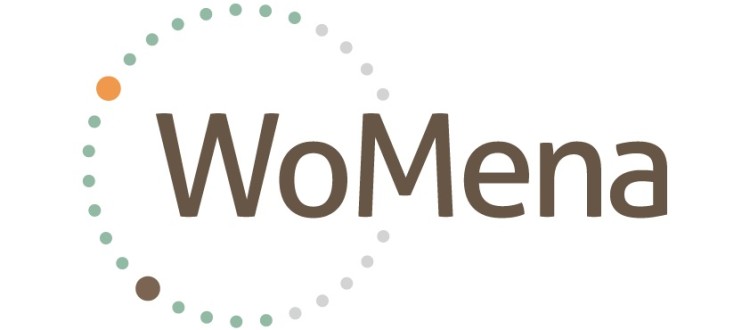Global Research Update #24
Puniz and Hekster, 2019: Technical brief for the Integration of Menstrual Health in SRHR. PSI Europe developed a tool kit with the aim of integrating menstrual health in existing Sexual and Reproductive Health and Rights (SRHR) programs. In order to integrate menstrual health in existing SRHR programs, courses of actions have been suggested as follows: (a) Inclusion of Menstrual Health in Family Planning/Reproductive Health and HIV counselling; (b) Provision of community outreach services and programs; (c) Running Health Communications and Behavior Change Campaigns; (d) Inclusion of Menstrual Health in (post-) abortion counseling; and (e) Training women and girls how to practice self-care, know their body, and value menstrual blood as they can contains unique health data and can be used as a noninvasive method for early disease diagnosis and management.
Ussher et al., 2019: Routledge international handbook of women sexual and reproductive health. This handbook examines women’s sexual and reproductive health across the lifespan through three main lenses: (1) feminist perspectives; (2) the biopsychosocial model; and (3) international, multicultural perspectives that acknowledge the intersection of identities in women’s lives, organized into six sections of (I) Menarche, menstruation, and menopause; (II) reproductive and gynaecological disorders; (III) contraception and infertility; (IV) pregnancy and childbirth; (V) sexuality and sexual health; and (VI) marginalized women’s health.
Chattopadhyay et al., 2019: WASH practices and its association with nutritional status of adolescent girls in poverty pockets of eastern India. As part of an intervention program, a sample of 6352 adolescent girls were randomly selected from three states of eastern India to assess water, sanitation, and hygiene (WASH) practices and its association with nutritional status among adolescent girls. Findings: 82% of girls had no sanitation facility in the household. About three fourth of the adolescent girls were not using sanitary napkins during menstruation. Only 9% of the girls accessed adolescent health services in the last six months. Majority of the girls (85%) had not accessed any service/ counseling from a frontline health worker. Girls who accessed water from outside the household were more likely to be stunted and were thin, particularly the young adolescent girls. The results of this study indicate that WASH practices have a significant association with the poor nutritional status of adolescent girls in eastern India.
Lenia, E, 2019: Assessment of knowledge, perceptions and practices of menstrual hygiene management among females aged (15-49 years) in Bidibidi refugee settlement, Yumbe district, Uganda. A cross-sectional study was conducted in Bidibidi refugee settlement in Uganda to assess the knowledge, perceptions and practices of females aged 15-49 years regarding menstrual hygiene management (MHM) in the refugee settlement. Findings: Inadequate MHM products were found among 35.1% of participants. Around 40% of women and girls had a lack of knowledge of menstruation despite the provided information and education. Inadequate menstrual hygiene practices were found among 36.7% of respondents shown by lack of privacy, poor storage and disposal of materials. There was a discrepancy on the preferred menstrual materials by the females and what aid agencies recommended. Women and girls in Bidibidi prefer to use disposable pads despite the recommendation by aid agencies for reusable pads.
Belayneh and Mekuriaw, 2019: Knowledge and menstrual hygiene practice among adolescent school girls in southern Ethiopia: a cross-sectional study. An institutional based cross-sectional study was conducted among 791 girl students of 25 high schools in Gedeo zone in southern Ethiopia between 2018 and 2019 to assess the knowledge and menstrual hygiene practices among adolescent school girls in southern Ethiopia. Findings: 77.7% of participants mentioned that they have experienced dysmenorrhea at least once within the last three consecutive menstrual cycles. More than half of the students clean their external genitalia with water and soap. Generally, 60.3% of girls found to have poor menstrual hygiene practice. Alongside poor knowledge towards menstruation, lower age and longer duration of menses flow were also associated with the poor menstrual hygiene practice.
Kim et al., 2019: Effects of Sleep Pattern, Stress, Menstrual Attitude, and Behavior That Reduces Exposure to Endocrine Disrupting Chemicals on Premenstrual Syndrome in Adolescent. A descriptive correlational study was conducted among 192 female adolescents with a mean age of 13.9 years old in a middle school in South Korea in 2018 to assess the effects of sleep pattern, stress, attitudes toward menstruation, and behavior that reduces endocrine disrupting chemicals (EDCs) exposure on premenstrual syndrome (PMS). EDCs are chemicals or mixtures of chemicals that interfere with the way the body’s hormones work. Findings: A total of 34.4% of the students answered their menstrual pain with a score of 7–10. Among the participants, 40.6% of them stated that they used analgesics during their periods. 28.1% reported a family history of PMS. In total, 4.7%, 79.2%, 16.1% of students had morning-, intermediate-, and evening-type sleep pattern. The mean scores for school-related stress were highest. The mean score for attitudes toward menstruation was 72.33 out of 147. The mean score for behavior that led to a reduction in EDCs exposure was 56.57 out of 85. The mean scores for PMS severity were 25.30 and 38.39 out of 60.The results showed that severity of menstrual pain exerted the strongest effect on PMS, followed by use of analgesics during menstruation, a family history of PMS, stress, and behavior that reduces EDCs exposure.
Do you want these monthly global research updates sent to your email? Send a email to WoMena at info@womena.dk.

